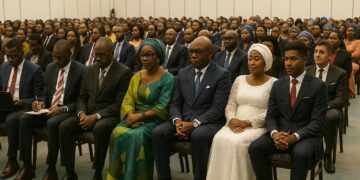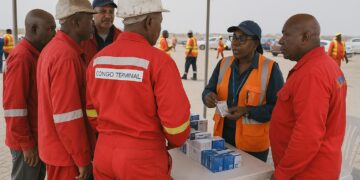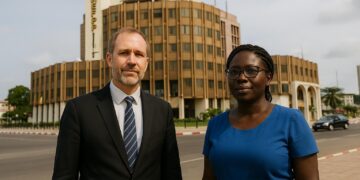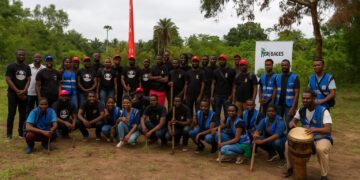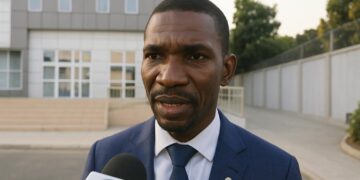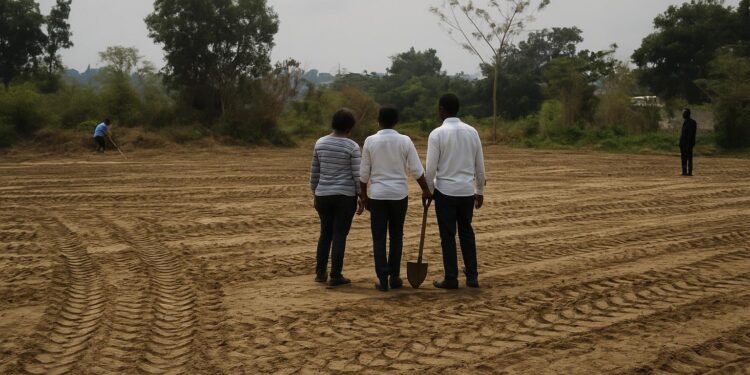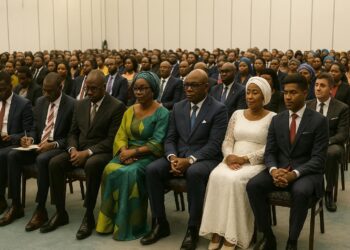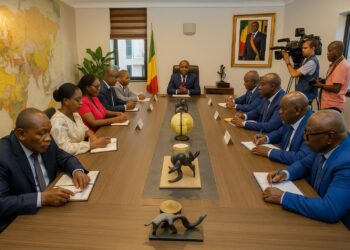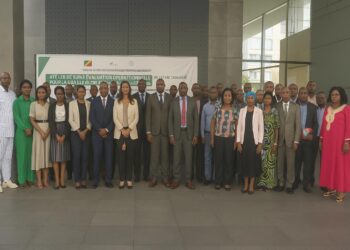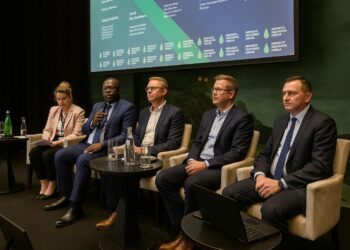Strategic lifeline for Brazzaville water
On the green northern outskirts of Brazzaville, the Djiri water production complex quietly pumps, treats and channels about seventy per cent of the capital’s drinking water. Its vast intake basins, filtration halls and distribution mains make it one of Congo’s most strategic public assets.
Yet the Congolaise des Eaux (LCDE), operator of the site, now faces an unexpected challenge: former landowners have returned, carving out plots, laying foundations and erecting dwellings inside the legally protected sanitary perimeter, despite clear prohibitions in the country’s public-domain and environmental legislation.
Illegal encroachment documented onsite
On 17 October, deputy managing director Bienvenu Ibara led an inspection team that filmed improvised brick kilns, sheet-metal fences and septic pits a few metres from raw-water pipelines. The footage was circulated to ministries and municipal officials as proof of what LCDE bluntly calls “spoliation”.
Guy Serge Ndinga Ossondjo, director of operations, warned that construction debris could clog pumps, corrode valves and compel “a partial shutdown of Brazzaville’s supply”. His words, delivered on site, underscored how physical encroachment rapidly morphs into a public-health and macro-economic vulnerability.
“This spoliation will generate solid waste that disrupts machines and forces us to stop producing water for the city,” he declared, standing between backhoes and chlorine reservoirs, an image that circulated widely on local social networks and prompted immediate ministerial inquiries.
Legal framework and institutional response
The sanitary buffer, classified as a Zone of National Strategic Interest under Law 6-2019 on Urbanism and Construction, exists precisely to guard against such contamination. Any habitation, livestock breeding or groundwater drilling within its limits is legally banned, yet enforcement remains uneven.
Legal experts note that the statute leaves no room for compensation claims inside the perimeter, because the State had already acquired full ownership before construction of the plant. LCDE therefore argues that the current intrusions amount to trespass rather than unresolved expropriation disputes.
For investors eyeing Congo’s water-sector modernisation programme, the episode underscores a broader question: how quickly can administrative services, local courts and security forces coordinate when a nationally important utility asset is threatened? Rapid clarity on that point often conditions capital-expenditure timetables.
The Ministry of Energy and Hydraulics has not yet issued a public communiqué, but officials consulted by LCDE on 17 October reportedly expressed support for “robust protective measures”. For now, responsibility for physical surveillance remains with the company’s internal security division.
LCDE has stepped up patrols, planted boundary markers and posted warning signs detailing criminal penalties. Still, in several places the tape has already been cut, revealing a cat-and-mouse dynamic that could escalate if administrative eviction orders are not executed swiftly.
Operational and financial stakes
Any forced stoppage at Djiri would oblige LCDE to reroute demand to smaller, less efficient plants along the Djoué and in southern suburbs, immediately raising production costs and amplifying network pressure losses. In an inflationary context, the budgetary impact on both utility and Treasury could be significant.
Consumers would feel the pinch quickly. In low-income districts where households already rely on standpipes, any service rationing often forces residents to purchase sachet water at triple the unit cost, straining family budgets and intensifying pressure on local authorities.
Public-health specialists further note that ad hoc wells dug within the perimeter could introduce pathogens into shallow aquifers, complicating LCDE’s treatment protocols and potentially raising chlorine dosing requirements. Higher chemical imports would weigh on hard-currency reserves already monitored closely by fiscal planners.
More broadly, prolonged disruption might affect the credibility of Congo’s public-private partnership pipeline, which places water treatment upgrades alongside energy and telecom towers as priority concessions. Lenders typically scrutinise land-tenure clarity before committing long-tenor financing.
Timeline for enforcement and investor confidence
Against that backdrop, LCDE’s call for community mobilisation carries economic as well as civic overtones. The company argues that water infrastructure, like forests and hydrocarbons, embodies a form of sovereignty that local residents have a duty to defend, not dismantle.
In the short term, stakeholders await a joint inspection announced by the prefecture, the cadastre and the gendarmerie. Such multi-agency visits often precede formal notices to vacate, and their timing will indicate how high the file has risen on the government’s priority ladder.
Policy analysts point out that speedy resolution would reinforce Brazzaville’s recent legislative efforts to improve the business climate, including streamlined property-registration procedures and incentives for industrial water reuse. Conversely, a protracted standoff could dull the momentum of those reforms.
For now, pumps keep turning at Djiri, and faucets across the capital still run. But the encroachment saga reminds decision-makers and investors alike that essential services rest on physical land whose legal status must be defended with the same rigour shown in financial audits.
Whether through swift evictions, negotiated resettlement or reinforced fencing, stakeholders now face a litmus test of the institutional capacity built since Law 6-2019. The outcome will resonate far beyond Djiri, signalling Congo’s determination to safeguard critical infrastructure.






